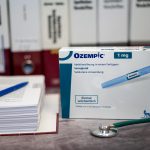
It’s already known that the “healthy glow” of a tan actually represents damage to skin cells. But a new study of people on vacation has found that sunbathing also can disrupt the skin’s microbiome, altering the populations of bacteria that live on the skin in ways that could be harmful to health. The microbiome recovers within a month, but during that time a person will be more vulnerable to skin problems, said senior researcher Abigail Langton. She is a lecturer with the University of Manchester’s Center for Dermatology Research, in England. “During this 28-day post-holiday period of recovery skin may have reduced health, making it more susceptible to infection or irritation due to the loss of Proteobacteria [a type of bacteria that lives on the skin] and the overall change in skin microbiota balance,” Langton said. For this study, researchers analyzed the skin of 21 healthy volunteers prior to scheduled vacations in sunny locales. The team noted the makeup of the skin’s microbiota, specifically the three main bacterial communities found there. The research team then analyzed participants’ skin the day they got back, and at 28 and 84 days post-vacation. The investigators sorted the vacationers into groups based on sun exposure — eight “seekers” who picked up a tan while away, seven “tanners” who already had a tan before they left, and six “avoiders” who… read on > read on >





































